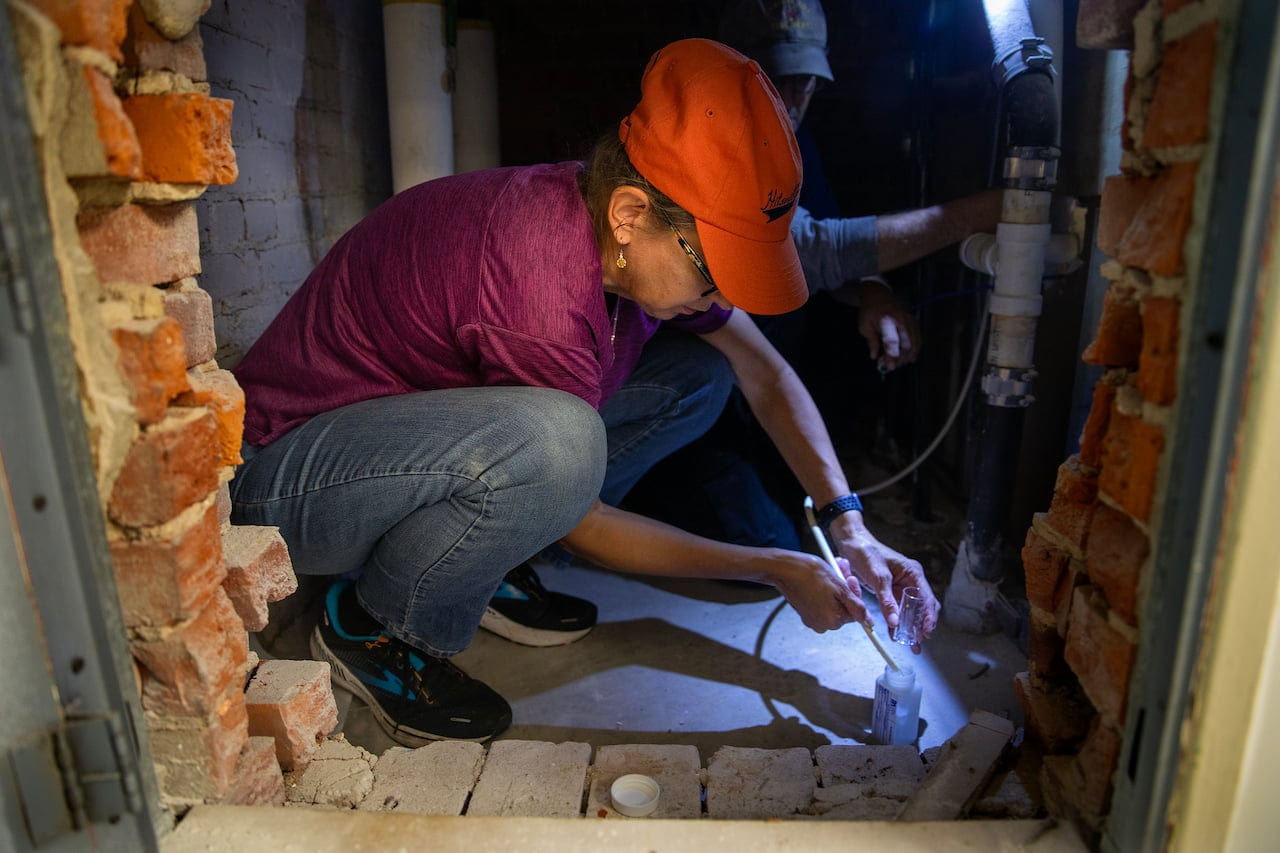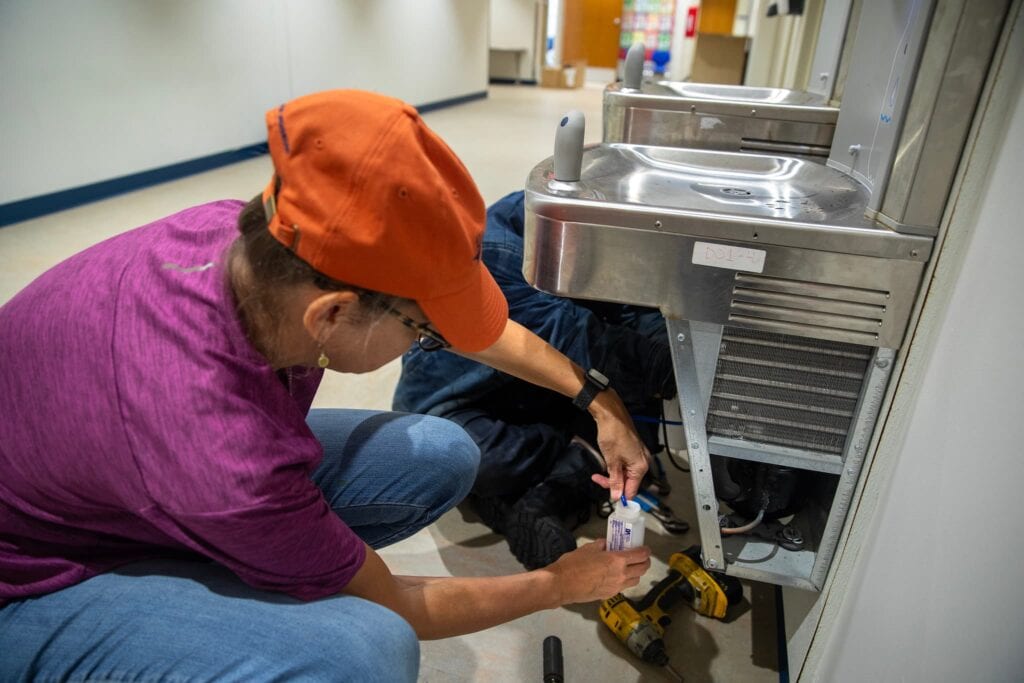
Building Flint’s trust in its drinking water
Even with lead service line replacement, the city’s water has issues that require public education.

Even with lead service line replacement, the city’s water has issues that require public education.
Experts

Borchardt and Glysson Collegiate Professor
JoAnn Silverstein Distinguished University Professor of Environmental Engineering
Professor of Civil and Environmental Engineering
Flint residents have learned to question everything in the decade since the city’s drinking water first began showing signs of lead contamination. Even now, after seven straight years with water meeting federal safety guidelines, the lack of trust remains for many.
University of Michigan researchers and their partners are addressing this lingering problem on multiple fronts—from continued testing to in-school education and consulting with the city.
Nancy Love, the JoAnn Sliverstein Distinguished University Professor of Environmental Engineering, leads a team that has been performing tests at Flint sites—a job she hopes one day will no longer be necessary. Even after Flint has spent years replacing lead service lines around the city—a process that is continuing—issues remain.
“We routinely measure lead in unfiltered samples above or well above 15 parts per billion,” Love said, citing the EPA action level for lead in water. “And these are buildings that no longer have lead service lines, so there’s no lead in the water coming in.
“The lead we’re finding now probably comes from things like galvanized or cast iron pipes, fixtures and lead solder that was used decades ago to repair plumb. Unless they rip everything out of these older buildings, you can still definitely have lead in there.”
State officials have sought to address this via legislation. Late last month, Michigan Gov. Gretchen Whitmer signed a series of bills enacting Filter First legislation statewide. Schools and day care centers are now required to install water filters at drinking fountains and bottle-filling stations.

A Whitmer statement said: “In Michigan we have seen the devastating and long-lasting impact of lead exposure and we are committed to making sure no child has to suffer through this again.”
Contamination from interior plumbing is a key factor behind the hydration stations—filtered water dispensers—that debuted in Flint Community Schools early in 2022. The project garnered headlines in 2018 with financial support from Elon Musk.
Settling on a design for the hydration stations was another hurdle, and Love served as a consultant on that project, helping to establish the performance criteria. The stations provide three levels of contaminant removal:
Laura Sullivan, professor of mechanical engineering at Kettering University in Flint, has been a key player in dealing with Flint’s water issues from the beginning, and serves as the point of contact with Flint Community Schools for the hydration station monitoring effort. She is working with local school students and staff on establishing monitoring and maintenance protocols.
“Flint students are more likely to trust that the hydration stations provide safe drinking water if they have a seat at the table when hydration station testing is discussed,” Sullivan said. “This experience can empower them to enhance trust in drinking water for their peers, teachers and parents.”

To help build that trust, Love turned to Justin Roelofs, an engineering technician in U-M’s civil and environmental engineering department. Roelof custom-built a cart to transport a mockup of the hydration stations into Flint classrooms to show students how the technology works.
“We want to remove the mystery around water treatment and water quality at the point of use,” Love said.
Residents began to question the safety of what came out of their taps following spring 2014 when the city began drawing its drinking water from the Flint River. Soon after, there were complaints of discoloration, bad smells and bad tastes in the water. Subsequent testing of that water showed high levels of lead contamination and, soon after, Legionella would also become a concern. In less than two years, Flint’s crisis was known globally and residents had learned to live on bottled water.
An American Academy of Pediatrics statement warns that lead exposure at an early age can hinder brain development: “Lead toxicity results in substantial, population-level effects on children’s intellectual abilities, academic abilities, problem behaviors and birth weight.”
Love and her team continue to perform research in areas that will benefit Flint and other cities facing similar issues. Those challenges include how water quality is impacted in cities that have lost, and are losing, significant portions of their population. Distribution systems designed for a larger number of customers are now relatively oversized which carries its own set of risks.

Love has been working in Flint for seven years with partial support from U-M’s Poverty Solutions initiative and the National Science Foundation’s Civic Innovation Challenge.